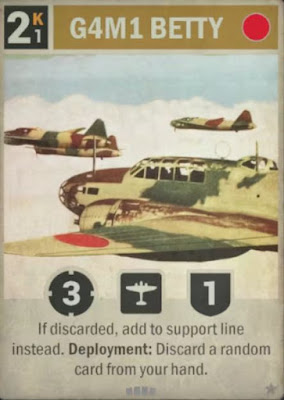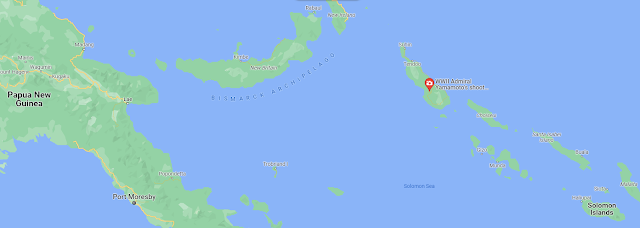 |
| A G4M1 bomber (depicted by the card game Kards) carried Admiral Yamamoto on his final trip. |
By 1943, Admiral Yamamoto had a legendary reputation among his counterparts among the Americans and British. Not only did he correctly predict the ascendancy of submarines and aircraft in naval combat (pre-World War 2), he was also credited to be the mastermind of the surprise attack on Pearl Harbor which temporarily crippled the American Pacific Fleet.
As such, the Americans deemed him as a priority target to eliminate. In April 1943, they would have that chance.
 |
| Admiral Yamamoto as depicted in the 2011 film Admiral Yamamoto |
On 14 April 1943, American Navy Intelligence decrypted Japanese information on Admiral Yamamoto's flight path in the South Pacific. He was to fly from Rabaul to Balalae on April 18 to raise the morale of the Japanese pilots who recently conducted an operation in that region. His flight team was to consist of 2 G4M1bombers (a.k.a "Betty") and 6 A6M3 fighters (a.k.a "Zero"), and would be departing Rabaul at 6 am (Japan time).
 |
| Yamamoto's final flight was to be from Rabaul to Ballalae |
The mission
Eighteen P-38 fighters ("Lightning") were left Kukum Airfield in the Solomon Islands at 0525 (Japan time) with the aim of assassinating Admiral Yamamoto. Of the 18, 4 specific fighters were dedicated to the task. However 2 of the 4 failed to launch, cutting the "kill team" by half.
Eighteen P-38 fighters ("Lightning") were left Kukum Airfield in the Solomon Islands at 0525 (Japan time) with the aim of assassinating Admiral Yamamoto. Of the 18, 4 specific fighters were dedicated to the task. However 2 of the 4 failed to launch, cutting the "kill team" by half.
At 0734 (Japan time), the P-38s spotted Admiral Yamamoto's flight team, and started to engage. Lieutantent Rex Barber quickly moved his Lightning behind Betty and fired into the right engine, tail and main body. He continued to attack, and hit the Betty's left engine. This finally caused the Betty to crash. Admiral Yamamoto died during this attack, with wounds to his left shoulder and right eye.
Barber then joined his teammate Lieutenant Besby Holmes and took down the remaining Betty Bomber.
The Japanese lost a total of 20 men (including Admiral Yamamoto) and 2 bombers in this ambush. The Americans suffered a lost of one plane and one pilot (Lieutantent Raymond Hine was shot down after the second Betty was downed and till this date is missing in action).
 |
| Admiral Yamamoto's crash site |
Aftermath and controversy
The Japanese found Admiral Yamamoto's crash site the next day in 19 April, a few kilometres north of Buin. Doctors determined his head wound as the cause of death, and the Japanese administration hid details of his death until 21 May 1943. The more gory details were of course, hidden from the public.
The Japanese found Admiral Yamamoto's crash site the next day in 19 April, a few kilometres north of Buin. Doctors determined his head wound as the cause of death, and the Japanese administration hid details of his death until 21 May 1943. The more gory details were of course, hidden from the public.
The Western public learnt of his death at the same time. While the Americans were relieved to have removed the architect of the Pearl Harbor attack from the equation, the British were not so happy. Prime Minister Winston Churchill protested to the Americans about hiding the operation from the British. Furthermore, the British saw the mission as a waste of resources for an individual person.
In addition, Captain Thomas George Lanphier Jr. was initially given partial credit for the downing of Admiral Yamamoto's Betty. After testimonies from forensics, his fellow pilots and a surviving Japanese pilot, most modern historians give sole credit to Barber for the kill.
As of this writing, this assassination was the last time the United States killed a major military leader in a foreign country in an active war.
Comments